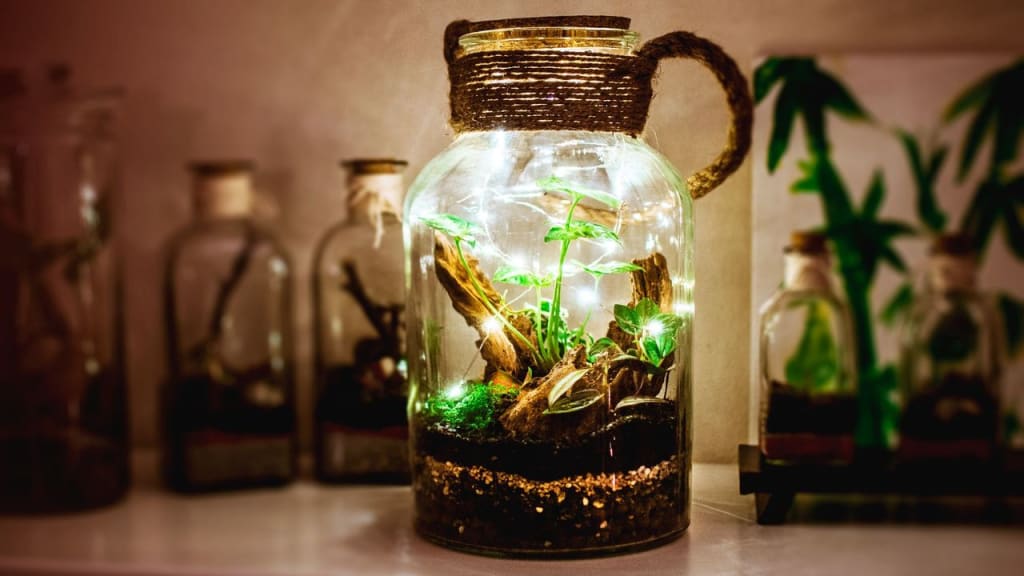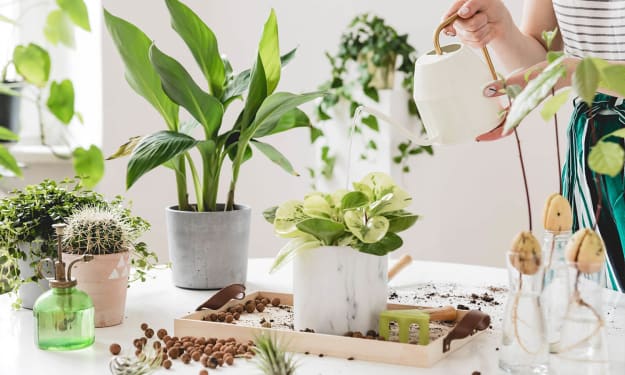The World of Terrariums_ Creating Miniature Ecosystems
The World of Terrariums_ Creating Miniature Ecosystems

The World of Terrariums: Creating Miniature Ecosystems
In a fast-paced world filled with technological advancements, finding a way to connect with nature can be a therapeutic and rewarding experience. One fascinating way to do this is by creating miniature ecosystems known as terrariums. Terrariums offer a glimpse into the wonders of the natural world, allowing you to observe the beauty of nature up close while nurturing a self-sustaining environment in a confined space. In this article, we will explore the captivating world of terrariums, from their history and benefits to step-by-step guides on how to create your own miniature ecosystem.
1. History of Terrariums
The concept of terrariums traces its roots back to the 19th century when Dr. Nathaniel Bagshaw Ward, a British physician and botanist, accidentally discovered the enclosed plant environment. While studying moth pupae, he noticed that a fern and some grass had started growing inside a sealed glass container. This observation led to the development of the Wardian case, a precursor to the modern terrarium.
During the Victorian era, terrariums became popular among the wealthy and botany enthusiasts. These miniature gardens allowed people to grow exotic plants from distant lands that were otherwise challenging to cultivate in their native climates. As time passed, terrariums evolved from scientific curiosities to beloved decorative pieces, captivating people of all ages with their charm and simplicity.
2. Types of Terrariums
There are several types of terrariums, each with its own unique characteristics and requirements:
a. Open Terrariums: Open terrariums have unsealed containers that allow for some airflow. They are suitable for plants that prefer lower humidity levels and do not require a fully enclosed environment. Succulents and cacti are popular choices for open terrariums due to their ability to thrive in drier conditions.
b. Closed Terrariums: Closed terrariums feature sealed containers that create a self-sustaining environment. The moisture inside the terrarium forms a water cycle, reducing the need for frequent watering. This type of terrarium is ideal for plants that prefer higher humidity levels, such as ferns, mosses, and tropical plants.
c. Hanging Terrariums: Hanging terrariums are suspended from the ceiling or a support structure, adding a touch of whimsy to any space. They come in various shapes and sizes, accommodating a wide range of plant choices.
d. Fairy Gardens: Fairy gardens are a whimsical variation of traditional terrariums, often incorporating small figurines, tiny houses, and other miniature decorations to create a magical, fantastical environment.
3. Benefits of Terrariums
Beyond their aesthetic appeal, terrariums offer several benefits:
a. Stress Reduction: Creating and caring for a terrarium can be a meditative and calming experience, reducing stress and anxiety levels.
b. Indoor Air Quality: Terrariums act as natural air purifiers by absorbing carbon dioxide and releasing oxygen, helping to improve indoor air quality.
c. Education and Learning: Terrariums provide an excellent educational opportunity, especially for children. They can learn about plant life, ecosystems, and the importance of balance in nature.
d. Low Maintenance: Terrariums generally require minimal maintenance, making them an ideal option for busy individuals or those with limited gardening experience.
4. Choosing the Right Container
Selecting the right container is essential when creating a terrarium. Glass containers are the most common choice as they provide visibility into the ecosystem and retain moisture effectively. Some popular container options include glass jars, fish tanks, and vases.
The container's size will depend on the type of terrarium you wish to create and the plants you intend to include. Ensure that the container has an opening large enough to add plants and decorations comfortably.
5. Selecting Suitable Plants
When choosing plants for your terrarium, consider their size, growth rate, and care requirements. It's essential to choose plants that have similar needs to create a balanced ecosystem. Here are some popular plant options for terrariums:
a. Mosses: Mosses are excellent choices for closed terrariums as they thrive in high humidity environments. They add a lush green carpet-like appearance to the terrarium.
b. Ferns: Ferns are known for their elegance and are well-suited for closed terrariums due to their love for humidity and shade.
c. Succulents and Cacti: Succulents and cacti are perfect for open terrariums since they prefer drier conditions and well-draining soil.
d. Fittonia (Nerve Plant): Fittonia adds a splash of vibrant color to the terrarium with its striking pink or red veins.
6. Creating Your Terrarium
a. Step 1: Start by adding a layer of small rocks or pebbles to the bottom of the container. This layer will act as a drainage system to prevent waterlogged soil.
b. Step 2: Add a thin layer of activated charcoal on top of the rocks. The charcoal helps keep the terrarium free from odors and prevents the growth of mold and bacteria.
c. Step 3: Next, add a layer of potting mix specifically formulated for terrariums. This type of soil retains moisture without becoming waterlogged.
d. Step 4: Carefully plant your selected greenery, arranging them to create an aesthetically pleasing composition. Use small gardening tools to avoid disturbing the layers below.
e. Step 5: After planting, water the terrarium lightly using a spray bottle. For closed terrariums, this initial watering should be enough to create the necessary humidity.
f. Step 6: If you're making an open terrarium, consider adding some decorative elements, such as small rocks, figurines, or tiny furniture, to enhance its visual appeal.
g. Step 7: Place the terrarium in a location with indirect sunlight, avoiding direct exposure to harsh sunlight.
7. Maintenance Tips
Terrariums are relatively low-maintenance, but some care is necessary to keep them thriving:
a. Watering: Closed terrariums usually require little to no watering once they establish their water cycle. For open terrariums, monitor the soil's moisture level and water sparingly to avoid overwatering.
b. Pruning: Trim and prune your plants when necessary to prevent overgrowth and maintain the desired shape.
c. Cleaning: Keep the glass container clean by wiping off any dust or condensation from the inside.
d. Light: Ensure that your terrarium receives the appropriate amount of light based on the plant types you've chosen.
Conclusion
Terrariums offer a captivating and rewarding way to connect with nature, bringing the beauty of the outdoors into your living space. Whether you opt for an open or closed terrarium, the process of creating and caring for these miniature ecosystems can be a delightful and educational experience. So, why not embark on this journey into the enchanting World of Terrariums and discover the joy of nurturing your miniature green oasis?
About the Creator
Kavya Organic Garden
Passionate about home gardening, plant care, growth, and maintenance. Join me on this exciting journey of organic practices and sustainable gardening! 🌱






Comments
Kavya Organic Garden is not accepting comments at the moment
Want to show your support? Send them a one-off tip.